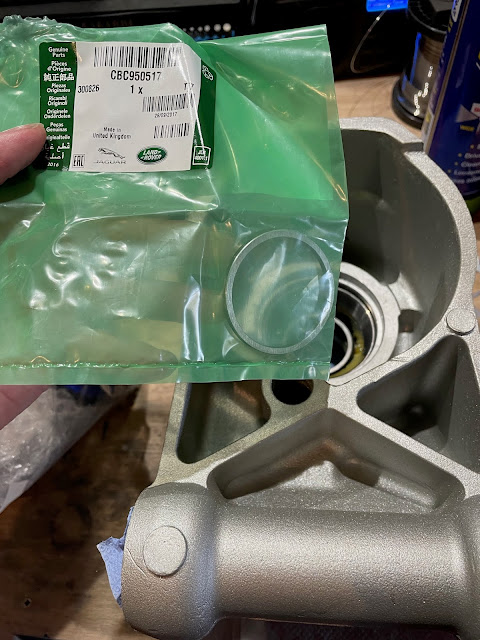With the hubs done and ready to be installed, I turned my attention back to the chassis and the installation of the rear wishbones.
The rear wishbones are new items supplied by AK. I bought new inner pivot bolts from SNG Barratt as I ended up "slightly" damaging the original ones whilst stripping down the donor axle/rear sub-frame.
The AK setup also requires the use of a spacer tube; these didn't come with my X300 axle but I managed to source a spare pair from Ben at Simply Performance.
Looking at the AK Build Manual, the installation of the wishbones is fairly straightforward. The (new) outer pivot bolt is passed through the rear of the new wishbone, through two washers, through the rear differential tie bar, through the spacer tube, through the front wishbone mount, through two more washers, and finally, through the differential pendulum mount before being secured with a final washer and bolt. The pivot bolts were given a liberal coating of copper grease prior to installation.
Simple.
 |
| Wishbone, new pivot bolt, washers and spacer tube |
Well, it was simple, apart from a couple of small issues.
First, the AK Build Manual calls for the use of 1 1/2" by 7/8" washers. But for some annoying reason, they don't supply these washers. This is a complete pain because despite exhaustive internet searching I could not find this size washer outside of the US of A. Fortunately I was prepared. Having read Richard Chippendale's blog and his solution of using M22 washers instead, I had already pre-ordered a pack of suitable replacement size washers.
 |
| Close-up of wishbone mounting configuration... |
 |
| ...and view of installed wishbone. |
The second issue is that the AK Build Manual suggests the use of an M12 is needed for the end of the inner pivot shaft. This is incorrect. Had I read/remembered Richard's blog better, I would have already known this. But I was not prepared for this eventuality, and so there was a short break in the proceedings for another order with SNG Barratt.
(I couldn't actually find the original fulcrum nuts from my donor axle. But even if I had, they were so rusty from when I removed them, that I wouldn't have wanted to re-use them in any case.)
The nuts are actually I believe an M14 thread. However, the proper Jag nuts have a bit of a skirt on them. This helps spread the load more evenly onto the washer on the end of the fulcrum bolt; this washer bears onto the metal sleeve in the bushing in the pendulum mount and a "normal" size bolt might cause some distortion of the washer when tightening.
 |
| Nice flange... |
Once these arrived it was a simple job to pop them onto the end of the fulcrum bolt, along with an M14 washer and fasten up hand tight for the moment. I will torque these up fully to around 70-75lb-ft / 90-102Nm once the wheels are on and the suspension is partially loaded.
Next step is to get the drive shafts reassembled before I can refit the hub carriers.


















































